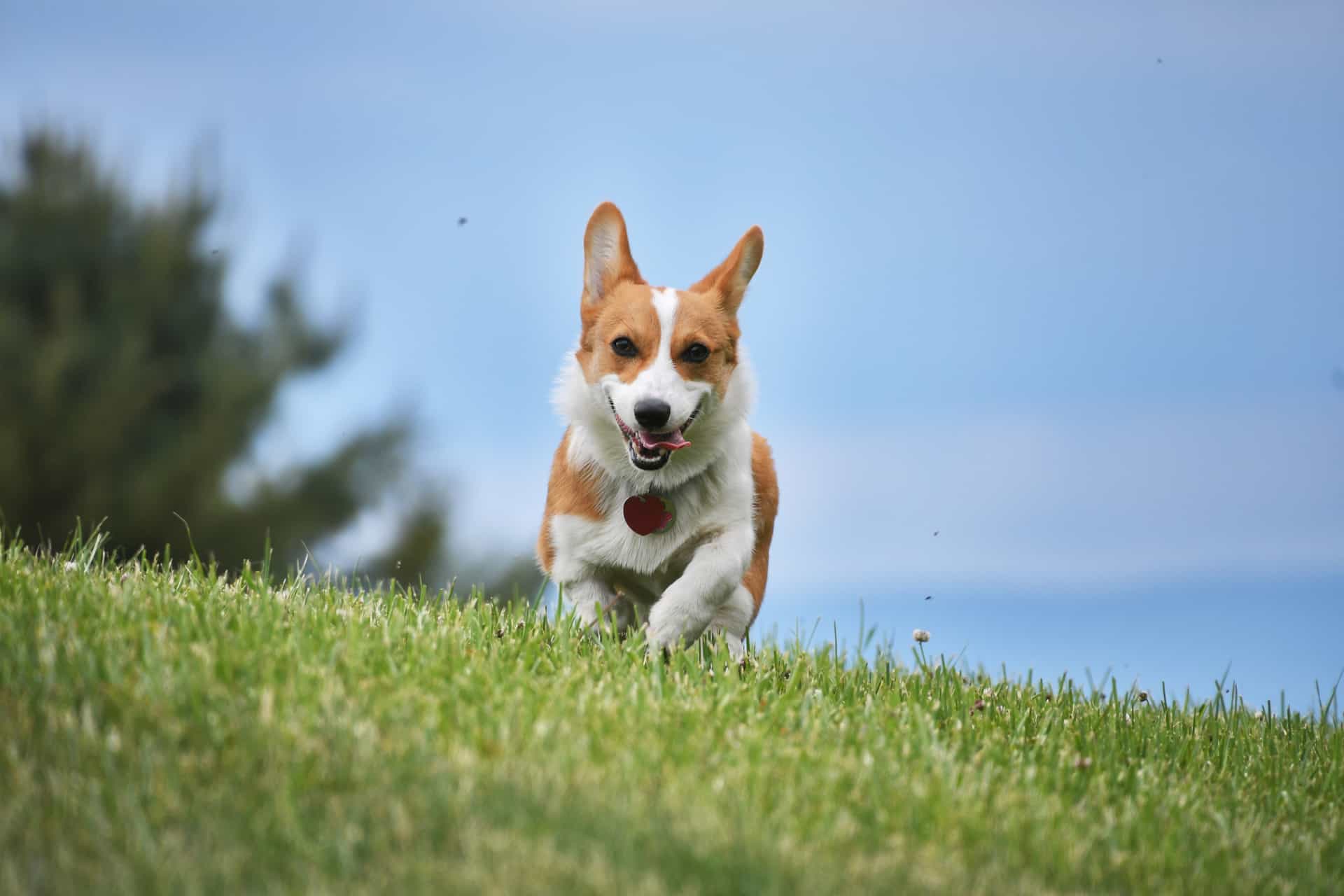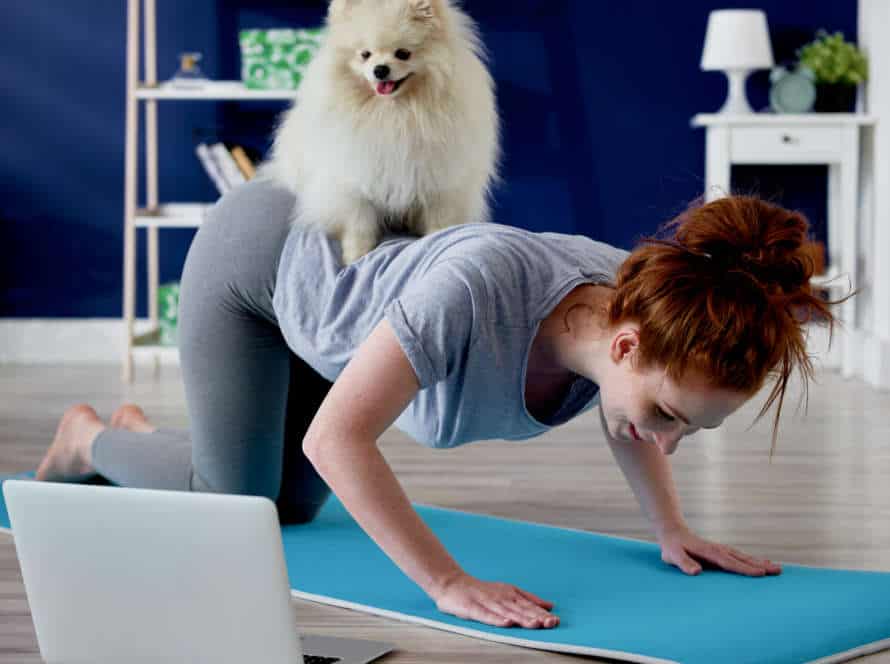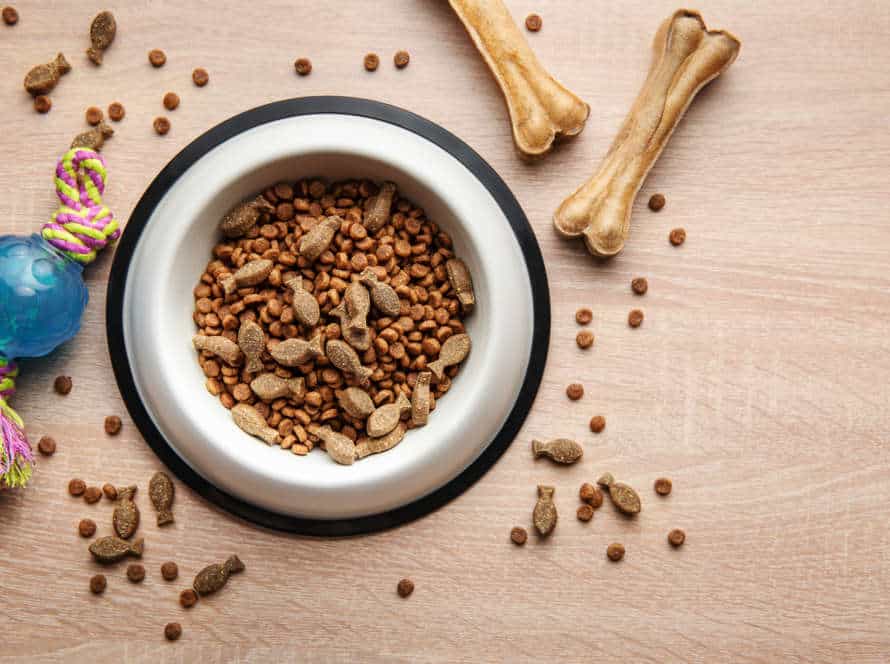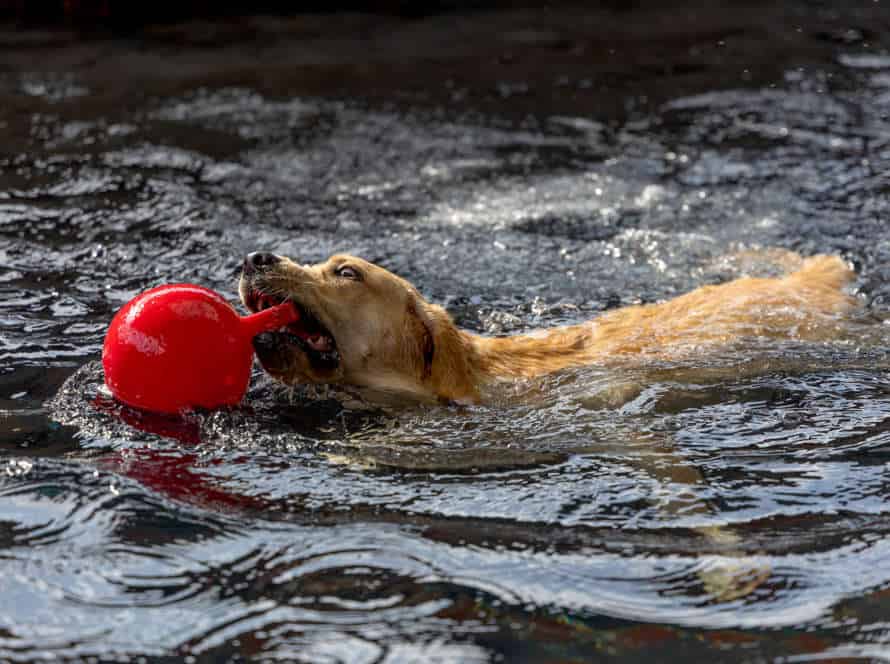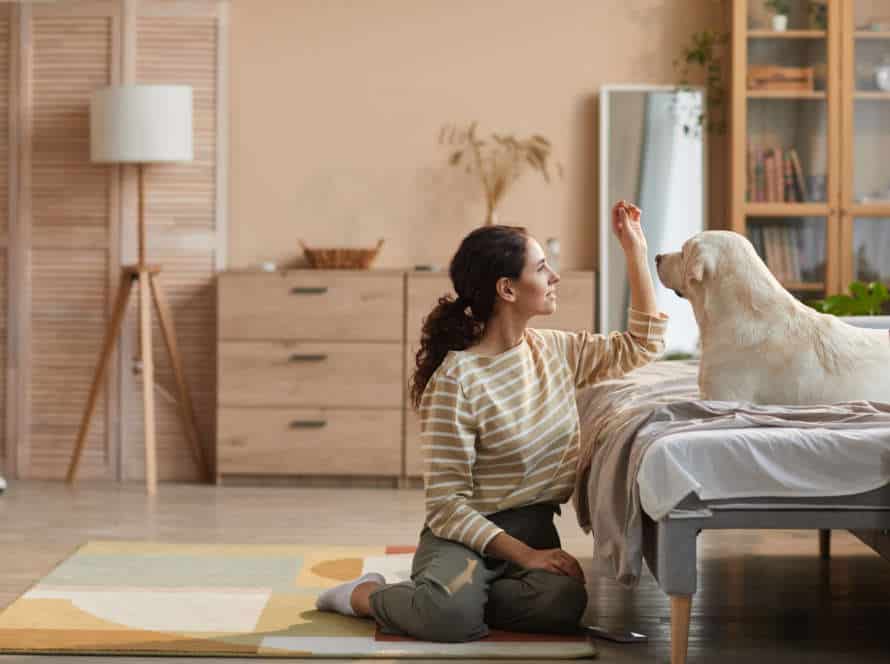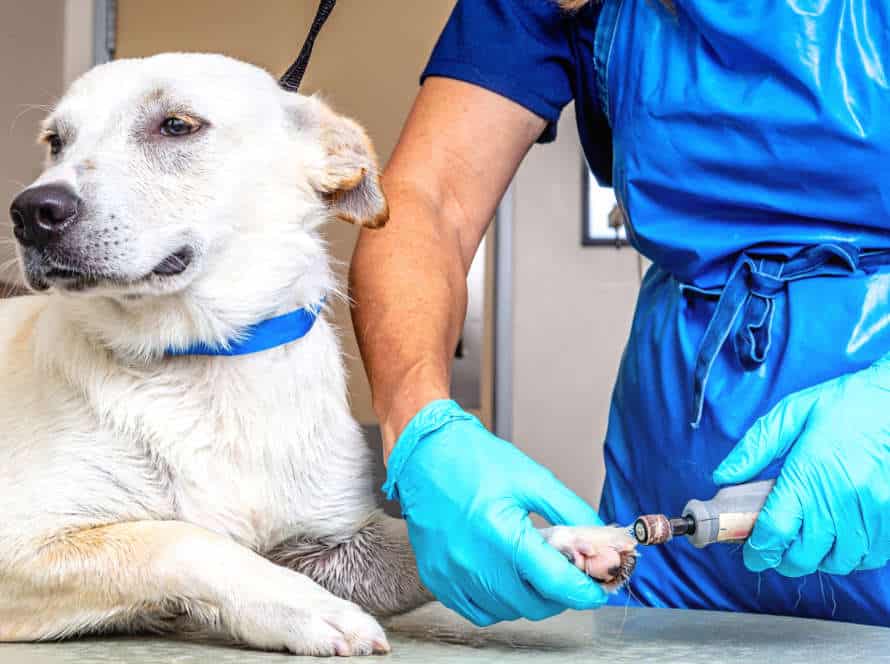A Puppy Owner’s Guide to Safe and Effective Exercise
If you own a pup, it’s a must to give them safe and useful physical activity. Here are some tips:
- Step by Step: Begin with light workouts like short walks and gentle fetch games, and then gradually increase the time and level of difficulty.
- Check the Weather: Take note of the temperature and don’t exercise your pup in extremely hot or cold conditions.
- Observe: Watch out for hints of tiredness or disquiet, such as heavy panting or lagging behind. Stop the exercise if these appear.
- Train: Add basic commands like “sit,” “stay” and “come” to your exercise sessions to benefit their mental and emotional health.
- Be Careful: Keep your puppy on a leash when outside, and make sure they have the right identification tags.
- Change It Up: Alter your exercise routine to stop them from getting bored and stay focused.
Remember, exercise is essential for keeping your pup’s physical and emotional health, but you need to be aware of their safety and limits.
Understanding Your Puppy’s Exercise Needs
Puppies need exercise, same as humans. But, their needs differ from adult dogs. So, it’s essential to know what activities your pup likes and dislikes. To keep them healthy, you must understand the exercise levels and activities that are safe for puppies. Let’s find out more about puppy exercise and how to keep them safe while exercising.
How much exercise does your puppy need?
As a puppy owner, it’s important to know the exercise req’s of your furry companion. Depending on their age, breed, and size, pups have different needs. E.g. small breeds like Chihuahuas or Yorkshires require diff. needs than larger breeds like Great Danes or Saint Bernards.
Pups 8-12 weeks old should only exercise for 10-15 mins, 2-3 times a day. Pups 3-6 months can exercise for 30 mins, still no more than 2-3 times daily. As a guideline, pups shouldn’t exercise more than 5 mins per month of age.
It’s essential to give your pup safe, non-jarring exercises like walking, swimming, or playing fetch in a safe area. Reward your pup with treats and lots of love during and after their routine.
The American Kennel Club’s recommendations for exercise
The American Kennel Club offers 3 tips for puppy exercise:
- Start gradually. Introduce short play sessions and increase intensity as puppy grows.
- Consider breed & age. High-energy breeds may need more intense exercise. Older puppies likely need less. Ask the vet for breed-specific advice.
- Variety is key. Exercise activities like walking, running, games, and play help keep pup engaged & stimulated.
Pro Tip: Have a regular exercise routine. This helps both you and your pup. Stick to it!
How to know if your puppy is getting enough exercise
Important to make sure your pup is getting enough exercise? How can you tell? It depends on breed, age and health. For most, 30 mins to 2 hours of exercise daily is good. Not enough exercise? Look for excessive sleeping, destructive behaviour and no interest in playing or family. Too much exercise? Limping, panting and disinterest in movement.
Give your pup safe, effective exercise. Think walking, fetching and supervised playtime. Talk to your vet first. Tips: Routine exercise promotes physical and mental health for your pup – leading to a happier and healthier life!
Preparing for Exercise
Getting ready to exercise with your puppy is necessary for their wellness and security. The most significant step is to ensure your pup is correctly examined by a vet to identify their physical health condition. Then, you should recognize the kind of exercise that is appropriate for your pup’s age and breed, and what activities you can both do together.
This guide will go over the starting points of preparing for exercise with your pup:
- Consult with a vet: The first and foremost step is to consult with a vet regarding your furry friend’s physical health condition before starting any exercise regimen.
- Choose appropriate exercise: Depending on your pup’s breed and age, ascertain the type and amount of exercise they require.
- Start Slow: If your pup hasn’t exercised in a while, start with light exercises such as walking and gradually increase their intensity and duration.
- Stay Hydrated: Always carry water and a bowl for your pup, and stay hydrated throughout your workout sessions.
- Consider the weather: Avoid exercising in extreme weather conditions as they may cause stress on your pup’s health.
Getting the right equipment
As a pup-parent, it’s key to have the correct gear. To guarantee safe and effective workouts for you and your furry mate!
Here are the must-haves:
- Leash: A good quality leash will keep your puppy secure and in your control during walks and outdoor activities.
- Collar or Harness: Collars and harnesses should fit properly but not too tightly, guaranteeing your pup’s comfort and safety.
- Toys: Toys are an excellent way to keep your pup engaged and amused while exercising, preventing them from getting bored and causing trouble.
- Water Bottle & Bowl: Hydrating during exercise is essential for both you and your pup. A transportable water bottle and bowl will make sure you can hydrate your pet on-the-go.
- Poop Bags: Cleaning up after your pup is a must, wherever you’re exercising – inside or outside.
By getting the appropriate equipment for your pup’s workout routine, you’re setting both you and your furry pal up for a safe and enjoyable adventure!
Warm-up exercises for your puppy
Warm-up exercises are essential for prepping your pup for an active and safe routine. They help with flexibility, blood flow, and keep them from getting hurt. Here are four warm-up exercises to do with your puppy before any physical activity:
- Passive Range of Motion: Gently move all their joints. Especially important for pups who may have joint issues.
- Slow Walking or Jogging: Take them out for a slow stroll or jog. This will increase their heart rate and get their blood flowing.
- Massage: Gently massage the muscles they’ll be using. This loosens them up and improves circulation.
- Stretching: Do gentle stretching exercises that focus on the major muscle groups they’ll be using.
These warm-up exercises help ensure your pup stays healthy and safe during exercise.
Creating a safe exercise environment
Safety is key when exercising with your pup. Here are some tips:
- Visit the vet first to check your pup’s health.
- Use a leash outdoors to keep your pup safe.
- Choose a fenced-in yard or pet-friendly park.
- Bring water and a bowl for your pup to drink from.
- Gently increase intensity and duration of exercise.
- Pay attention to your pup’s body language and behavior.
- Reward them with treats and praise for good behavior.
Types of Exercise for Puppies
Exercise is a must for pup parents! It’s vital for pup health, joy, and behavior. Exercise gives physical, mental, and social stimulation which all puppies need. You can pick from various activities to keep your pup active, like walking, running, swimming, or agility courses.
Let’s explore the top exercises for puppies!
Walking
Walking is an excellent exercise for puppies. It helps with their physical and mental growth, as well as socialization.
But there are other exercises that are beneficial too!
Stair climbing helps build leg muscles and coordination.
Fetching is fun, great for bonding, and a way to exercise.
Tug-of-war is good for jaw and shoulder muscles.
Swimming is a low-impact exercise, good for puppies with joint troubles or injuries.
It’s essential to talk to your vet about the perfect exercise routine for your pup. Age, breed, and health must be taken into account.
Running/playtime
Exercise is key for a pup’s health and growth. But you must take care to provide the right kind of exercise to avoid hurting them or tiring them out too much. There are several types of exercises that can help your puppy, like running or playtime. Here’s how you can add them to their daily routine:
- Running: High-impact exercise is great for pups over six months old with fully grown muscles and joints. Start with short runs and pay attention to your pup’s breathing and behavior. Don’t let them get over-tired.
- Playtime: This is an important part of your pup’s day. It strengthens their bond with you and helps them socialize. Games like fetch, hide-and-seek, or tug of war are great. Don’t over-excite or tire them out.
Gradually increase intensity, duration, and frequency of their exercises. Monitor your pup’s behavior and energy levels. Regular exercise will make them physically, mentally, and emotionally strong. It’ll make them happy and healthy.
Pro tip: Keep your pup hydrated and give them breaks during exercise to avoid overworking them.
Swimming
Swimming is great exercise for puppies! It’s low-impact and works out all their muscles. But, remember to consider the pup’s breed, age and health first.
Here are two types of swimming exercises:
- Treading: Good for younger or smaller dogs. Just swim in a circle and reward your pup to keep them motivated.
- Retrieving: More advanced and perfect for energetic breeds. Throw a ball into the water and have the pup swim to get it. Monitor the pup and use a life-jacket for safety. Have a plan ready to pull the pup to the shore in case of emergency!
Exercising with Your Puppy
Exercising with your pup is essential for their physical growth. From a short stroll around the neighborhood to a long trek in the forest, taking your pup out to exercise has lots of advantages. Not only does it keep your puppy fit, but it also helps reduce pesky behaviors like chewing and barking. Here, we’ll go over why exercising with your puppy is important and provide you with tips to make the most of your time together.
The importance of being present during exercise
It’s key to be attentive and involved when exercising, especially if it’s with your pup. Here’s why:
- Prevent Injury: Your presence makes it possible to keep an eye on your pup’s movements and actions, thus avoiding accidents and hurt due to over-exertion or wrong form.
- Build a Bond: Exercising with your pup is a great way to strengthen your relationship and your communication.
- Motivate: Your presence gives your pup positive reinforcement and encourages them to stay active.
- Ensure Effectiveness: Being there helps you track your pup’s progress and adjust exercises to get the desired results.
So, it’s vital to be totally engaged and present when exercising, especially with your pup.
Interacting with your puppy during exercise
Interacting with your pup while exercising is essential! Here are a few tips:
- Reward them with treats & praise for good behavior.
- Check in often, especially if they’re new to exercise.
- Be patient and give them time to explore.
- Keep it fun with toys, games, & activities both can enjoy.
Following these tips will make exercising together safe & rewarding!
Using positive reinforcement during exercise
Puppies are so full of life and fun! Exercise is very important for their physical and mental health. Positive reinforcement during exercise is a great way to motivate your pup and strengthen your bond. Here’s how:
- Treats, toys and praising are great rewards when they do well.
- Start out slow and easy. Increase the duration and intensity when your pup is ready.
- Keep it fun by switching it up and giving them breaks.
- Avoid punishing or being negative.
Positive reinforcement makes exercise a good experience for your puppy. It helps them stay healthy and active!
Exercise and Training for Puppies
Exercise and training are essential for your pup’s well-being. It keeps them active and fit, working their muscles, coordination, and other physical and mental skills. Exercise is perfect for your pup’s mental health. It gives them an outlet for their energy and helps them concentrate. Here are the most practical and effective ways to exercise and train your puppy:
Incorporating obedience training into exercise
Incorporate obedience training into your pup’s exercise sessions for better obedience and physical activity. Here are some tips:
- During rest periods, begin with commands like “sit” and “stay“.
- Take “focus” cues on walks.
- During activities like fetch, do “wait” or “leave it“.
- Praise and occasional treats for good behavior.
- Don’t forget: rest breaks are essential for pups.
Obedience training helps keep puppies fit and establishes the groundwork for a well-trained adult dog.
How to teach your puppy new exercise routines
Train your pup with new exercises – it’s important for their growth! But make sure they’re safe. Here are some tips:
- Start slow – like walking and playtime.
- Be consistent – set a routine.
- Positive reinforcement – use treats, playtime, and praise.
- Focus on the fun – use toys and games.
Remember: Pay attention to their health and adjust the intensity/duration as needed.
Common mistakes to avoid when training and exercising with your puppy
It’s important to avoid mistakes when training and exercising with your puppy. These can be damaging to their health and behavior.
Common errors include:
- Exercising too much – their joints and bones are still growing. This can cause injuries and long-term issues.
- Skipping obedience training – this is key for proper behavior. Without it, there could be behavioral difficulties.
- Using punishment as a training method – never do this. Positive reinforcement is the most successful and kind way to train.
- Failing to socialize – this is vital. If neglected, they could become anxious or aggressive.
By avoiding these common errors and following the right exercise practices, you can ensure your puppy remains healthy, content, and obedient.
Preventing Injuries
Puppies sure are cute, but watch out when exercising with them! High impact activities like running and jumping should be avoided, to stop any injuries. Need tips for keeping pups safe? Here’s what to know.
- Growing fast, puppies need extra protection.
- So, avoid activities that could cause injury.
Signs of injury in puppies
As a pup’s owner, it’s essential to recognize injury signs. Here are some that may indicate an injury from activity or playing:
- Limping: If your pup’s limping, try to keep their exercise low and observe the injury a few days.
- Yelping/Whimpering: If they start yelping/whimpering, pause the activity and check for an injury.
- Swelling: Swelling could mean an injury. Reach out to your vet for help.
- Loss of Appetite: A sudden stop in eating or drinking could mean pain or injury. Monitor your pup and contact your vet if the problem persists.
Prevent injuries with appropriate exercise, rest, and a stress-free environment. Pro tip: Consult your vet for best training exercises and nutrition for your pup’s health.
Common injuries in puppies and how to prevent them
Puppies are full of energy and love to play. This can make them more likely to get hurt. Here are some common injuries in puppies and how to stop them happening.
Sprains & Strains: These can happen when pups run, jump or play too hard. To stop them, give your pup enough exercise and don’t overwork them. Have regular breaks and go for leisurely walks instead of long runs.
Fractures: Puppies have delicate bones that can break easily during playtime. To avoid this, no roughhousing and keep them away from high places and stairs.
Heat Strokes: Pups struggle to keep their body temperature regulated and can overheat quickly in hot weather. To stop heat strokes, keep them inside during the hottest times of the day. Make sure they stay hydrated or take them swimming.
Ingestion of Foreign Objects: Puppies are curious and like to chew on anything they find. To prevent this, keep sharp objects and poisonous substances out of reach. Watch your pup during outdoor play and give them safe toys to chew and play with.
Pro tip: Early socialization, training and regular vet care can help stop accidents and injuries.
What to do if your puppy is injured during exercise.
If your pup is hurt whilst exercising, you must act fast and take the right measures to reduce the pain and stop further damage. Do this:
- Halt the exercise straight away and try to keep your puppy quiet and still.
- Check if any blood or swelling is present.
- If there is blood, press a clean cloth or gauze gently on the wound until the bleeding stops.
- If your puppy is in pain or has a more serious injury, see a vet as soon as possible. Explain what happened and the symptoms your puppy is having.
Prevent injuries during exercise by warming up your pup with some easy stretches before starting. Increase intensity and time gradually. Plus, choose activities suitable for your pup’s breed, age, and physical abilities.
Tip: Store a first-aid kit and vet emergency contact info in case of injuries.
Frequently Asked Questions
1. What is the recommended amount of exercise for a puppy?
It is recommended that puppies get at least 20-30 minutes of exercise twice a day, but the amount and type of exercise should be adjusted based on the breed, age, and size of the puppy.
2. What are some safe exercise options for puppies?
Walking, playing fetch, and light jogging are safe and effective exercise options for puppies. Swimming can also be a great low-impact option for some breeds.
3. How can I tell if my puppy is getting enough exercise?
If your puppy is well-behaved, sleeping soundly, and maintaining a healthy weight, they are likely getting enough exercise.
4. Can I exercise my puppy immediately after feeding?
No, it is best to wait at least an hour after feeding your puppy before engaging in any physical activity to prevent digestive issues.
5. Are there any exercises that are unsafe for puppies?
Yes, exercises that involve jumping or other high-impact movements should be avoided until the puppy is fully grown to prevent injury. Additionally, excessive running or rough play can also be dangerous for puppies.
6. How can I make sure my puppy stays hydrated during exercise?
Always provide access to fresh water before and after exercise. If you are going on a long walk or hike, bring along water and a portable bowl for your puppy to drink from.

